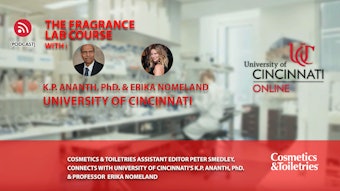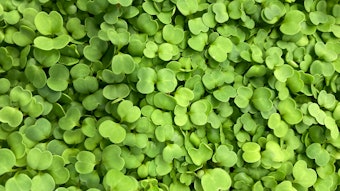From the author: I became involved in emulsion science by complete accident. My main expertise is in the coating/printing industry, as well as in web-handling, formulation chemistry, nanostructures, bio-mimetics and technical software applications. Two years ago, however, I had to re-formulate an emulsion by changing the oil in it, which required additional guidance as to which surfactant to then use; here, rather than the term emulsifier, surfactant is used, in its neutral scientific sense. Since this substitution process seemed fairly routine, one might assume it would be simple to find a scientific method to carry it out. However, in reviewing the literature, I found it surprisingly challenging. Critical micelle concentration (CMC) and hydrophile-lipophile balance (HLB) were irrelevant and useless for my needs: CMC because like most cosmetic formulations, relatively high concentrations were being used; and HLB because it is largely discredited for anything other than ethoxylate surfactants at room temperature. Also, a new (to me) idea seemed promising: critical packing parameter (CPP), but also proved impractical for a real-world formulator, although it does provide insights into mesophases. Finally, my search led to the concept of hydrophilic lipophilic difference (HLD), and its recent extension, HLD-NAC, where NAC refers to the net average curvature. This concept will be described in greater detail in the present article.
It was obvious that HLD-NAC would easily meet my needs for rational formulation because it took account of all key parameters: surfactant blend, oil, salinity and temperature. However, since even easy theories can be tricky to grasp, I wrote a computer program that allowed me to “play” with all the parameters and make sense of them. To better understand these parameters, I contacted key people behind HLD-NAC, especially Jean-Louis Salager, the “father” of HLD, and Edgar Acosta, the “father” of NAC. It turned out that no one had attempted to put HLD-NAC into a user friendly format, so Acosta helped sort out the details and the resulting software was posted to the Internet, free to users. As far as I was concerned, this was the end of the story. I had the theory I needed and using it, even a non-expert such as myself could formulate emulsions right the first time. Further, surfactant science could benefit from the theory, as it was published in the public domain. However, I suddenly found myself lecturing to expert surfactant scientists about how to formulate scientifically. These people had been working for decades on surfactants, and here was an ignorant outsider explaining to them that HLB and CPP were hopeless and useless, and that HLD-NAC was both simple and powerful. It is not a new or complicated theory but somehow over the decades, formulators seemed to consider surfactants as art rather than science. With this background out of the way, I can come to the point of the article. Time after time, I have met strong objection from surfactant experts who believe that HLD-NAC is not as good as the Phase Inversion Temperature (PIT) technique, so they are not interested in it. Even if you have not met PIT by name there is a good chance you have used it. It refers to formulations that are heated and stirred to enable the easy formation of an emulsion, then cooled rapidly to create a stable emulsion relying on phase inversion—provided they are based on ethoxylates, which are the only common class of surfactants that exhibit this behavior. Well, let me tell you something: HLD-NAC gives far more than the phase inversion temperature (PIT); it gives the phase inversion formulation (PIF).










